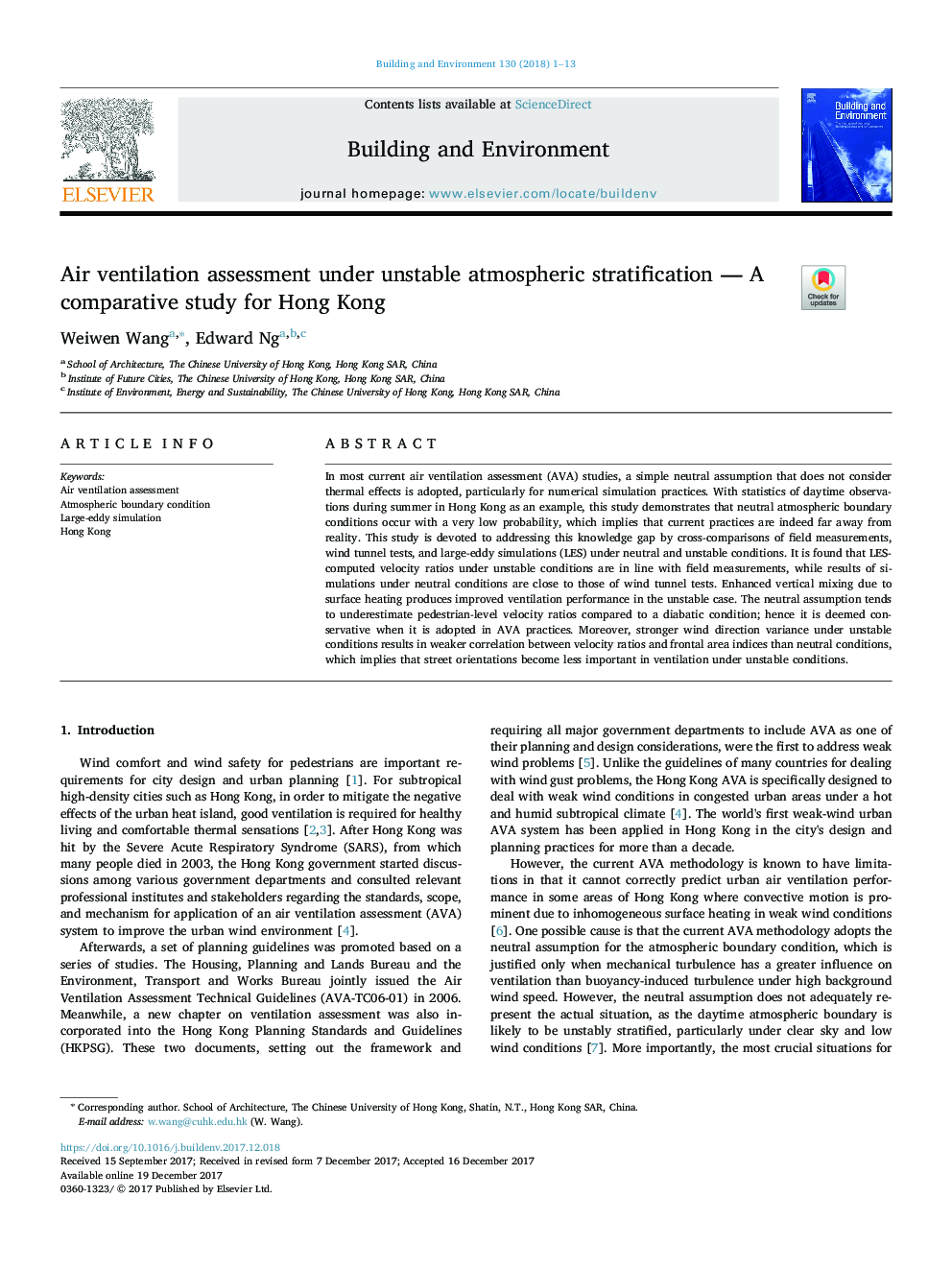| Article ID | Journal | Published Year | Pages | File Type |
|---|---|---|---|---|
| 6698115 | Building and Environment | 2018 | 13 Pages |
Abstract
In most current air ventilation assessment (AVA) studies, a simple neutral assumption that does not consider thermal effects is adopted, particularly for numerical simulation practices. With statistics of daytime observations during summer in Hong Kong as an example, this study demonstrates that neutral atmospheric boundary conditions occur with a very low probability, which implies that current practices are indeed far away from reality. This study is devoted to addressing this knowledge gap by cross-comparisons of field measurements, wind tunnel tests, and large-eddy simulations (LES) under neutral and unstable conditions. It is found that LES-computed velocity ratios under unstable conditions are in line with field measurements, while results of simulations under neutral conditions are close to those of wind tunnel tests. Enhanced vertical mixing due to surface heating produces improved ventilation performance in the unstable case. The neutral assumption tends to underestimate pedestrian-level velocity ratios compared to a diabatic condition; hence it is deemed conservative when it is adopted in AVA practices. Moreover, stronger wind direction variance under unstable conditions results in weaker correlation between velocity ratios and frontal area indices than neutral conditions, which implies that street orientations become less important in ventilation under unstable conditions.
Keywords
Related Topics
Physical Sciences and Engineering
Energy
Renewable Energy, Sustainability and the Environment
Authors
Weiwen Wang, Edward Ng,
